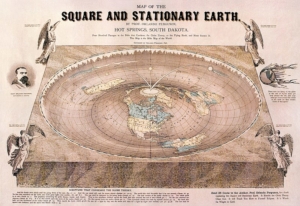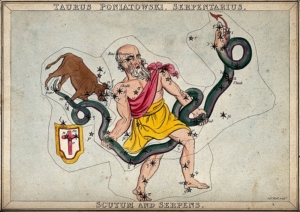What is a Post Hoc Fallacy?
We all use them and perhaps that’s because we have heard them so many times before. What is a post hoc fallacy and what are post hoc fallacies in astronomy? A superstitious person may claim that falling stars make wishes come true and bring good luck. While another person can be convinced the Earth is flat instead of spherical shaped. And furthermore, it is believed by some that the alignment of stars contain divine information about human affairs.
Post hoc fallacies are an error in judgement about the cause and effect of an event. This is often when people, “jump to conclusions” based on believing one thing causes the other with very little questioning.
A fallacy is faulty reasoning; misleading or unsound argument in the logical sense. Just because X thing happened, does not always mean that Y was the cause. This is also considered anecdotal as people spread a personal intuition about false causes and associations. A Post hoc fallacy is sometimes referred to as a false cause fallacy. Post means “after”, hoc means “this” and fallacy basically means a “false argument”.
False cause and effect

Sometimes it may indeed mean, that when something appears to be true by association, it is in fact. However, if a 97 year old lady died while eating Campbell’s chicken noodle soup, should the family sue the company without investigation? Did you catch the association and the conclusion there? While it’s easy to blame the soup to have caused the lady’s death, it is possible she died of more natural causes related to her age instead.
If we could go back and ask dinosaurs if wishing on falling stars brings luck, what do you think their answer would be? The Chicxulub impact is plenty of evidence to dismiss objects that fall from the sky as a symbol of luck.
Flatearth post hoc fallacy
The same is true for those who think the Earth is flat. Just the simple fact of how the Tycho crater of the moon appears to different people around the globe. It appears on the bottom as seen from the northern hemisphere. As opposed to those who live in the southern hemisphere. They see the same crater at the same time appear on the top of the moon. This simple observation is proof that humans indeed live on a spherical shaped planet.

But of course we also have years of scientific proof as well. Like how shadows are cast at different angles in different places around the world. In addition we have actual images of our home planet from a distance, et cetera. And let’s not forget the obvious; that we can see the spherical shape of our moon, Sun, neighboring planets, their moons, so on and so forth.
Feelings versus Facts
Watching a YouTube video about someone else’s false associations is not real evidence. Instead, it’s that person’s post hoc fallacy which can’t be used as scientific evidence. Feelings don’t count towards real proof in the scientific method. That falls more under superstition or anecdotal evidence.
When a person “feels” a certain way, they can often convince themselves that their intuitions are correct. Especially if the visual evidence “appears” to be convincing through mistaken causes and associations.
I mean, who do we honestly trust the most after all? Isn’t it ourselves? That seems like a logical and reliable source, right? We won’t be considered a liar! Especially if we’ve already shared our feelings and ideas with others.
It’s too embarrassing to admit when we’re wrong. Therefore, the default practice is to strengthen our intuitions. We do this by looking for justification in confirmations from anyone who will agree with our ideas. Running to the internet has been the post hoc fallacy person’s playground. If people disagree with you online, just block them. If they agree with your feelings however, then welcome to your circle. Sound familiar?
Astrology post hoc fallacy
Perhaps the most confused and false association subject as a whole is astrology, which is based on beliefs. This is NOT to be confused with astronomy which is based on science.

Astrology is the study of the alignment of the stars and their position to Earth. It is further believed that a divine association from the star’s alignment has human significance and can yield behavior predictions. Conversely, astronomy is the study of everything outside Earth’s atmosphere. One uses causation as association and the other relies on solid scientific evidence. Can you guess which is pseudoscience and which is actual science?
The Scientific Method
Although personal intuitions are considered emotional feelings, they can be a useful tool when applied properly. Intuitions are part of the starting point of scientific research and someone who uses critical thinking understands this. According to Khan Academy, these 6 steps are part of the scientific method:

- Make an observation.
- Ask a question.
- Form a hypothesis, or testable explanation.
- Make a prediction based on the hypothesis.
- Test the prediction.
- Iterate: use the results to make new hypotheses or predictions.
Have you ever heard someone say they have a theory? Did you know that the scientific method has to take place before a new theory can accurately be defined? Sure, people can have firm feelings about their ideas and strongly agree with themselves. However, have they followed the 6 steps of the scientific process before claiming a new theory?
Post hoc fallacy post conclusions
It is vital to follow the order of the scientific process while making scientific claims. Skipping this process actually reveals more about the person making the claim than it does about their idea. It’s okay to have passion and feel strongly about certain subjects or ideas. It’s also okay to have beliefs about anything a person wishes. In contrast however, it’s not okay to make scientific claims that don’t involve critical thinking and exclude the scientific method.
An actual peer review never includes YouTube videos or Facebook likes as real evidence. Knowing how to identify a post hoc fallacy can help in the process of questioning other people’s claims. Avoiding confirmations to justify a personal false cause and association is vital to the scientific method. Quickly judging that X must be true because Y took place at the same time is jumping to conclusions. Instead, consider the observation, question it, and form a hypothesis. From there make a prediction, test it, then finally hold it to be true, if it in fact is.


